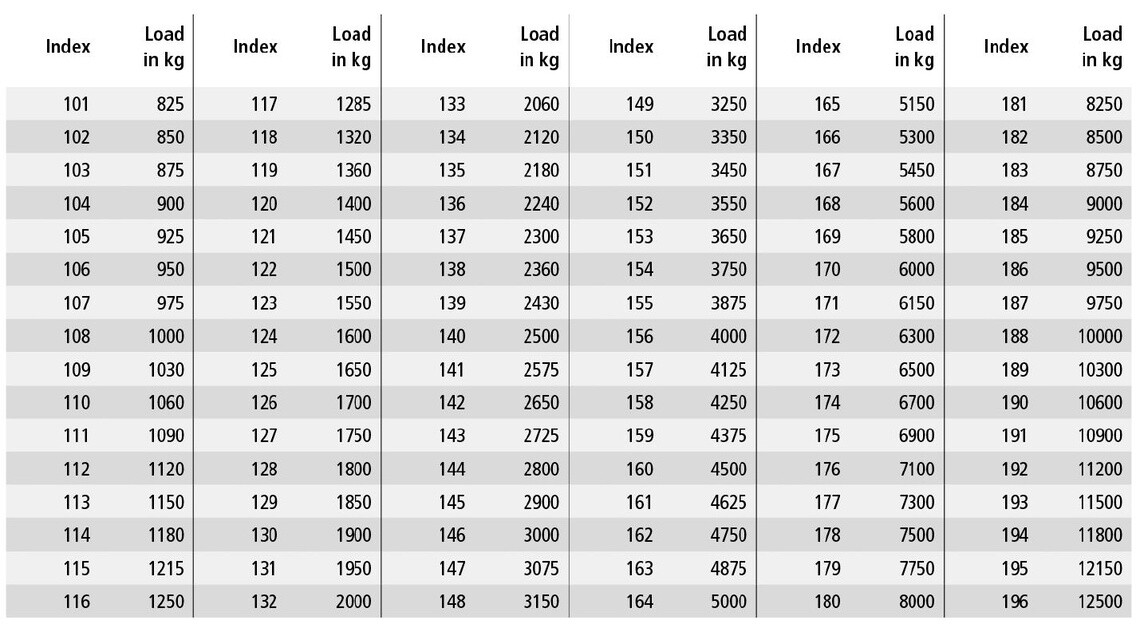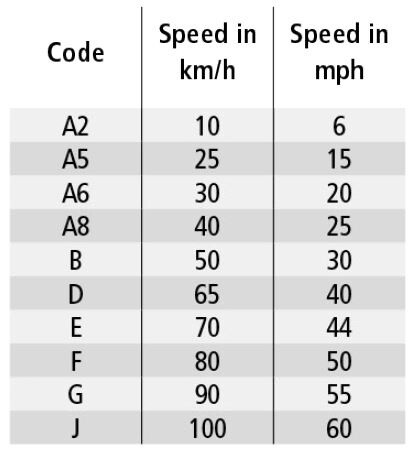
Medium Horsepower tractor preparing soil
Agricultural vehicle preparing soil in field
How to determine the tyre load index on your tractor
Your tractor's tyres can carry heavy loads... but up to what point? The tyre load index (also called tyre load rating) is the reference on your tyres that indicates the limits that must not be exceeded. But how do you understand this index and determine the maximum load your tractor can carry? Does speed also play a role in maximum load? What pressure should be used depending on the load? Our experts help you to understand.
SUMMARY:
What is the tyre load index?
The tyre load index corresponds to the maximum load a tyre can support at maximum speed.The tyre load index is represented by a 3-digit number. It is closely linked to the speed index, which is represented by a letter. Example: 155 D.
Where is the tyre load index indicated?
The tyre load index, like the speed index, is marked on the tyre.
In the sidewall picture example, the tyre load rating can be seen just below the tyre size.
To find out more about tyre markings, click here.
In this image, the tyre load index is 155. The letter D corresponds to the speed index. To find out what the maximum load is, refer to the tyre load index chart.

Tyre load rating marking
Tyre load index chart
The load index chart shows that a tyre with a load index of 155 can carry a maximum load of 3875 kg. To find out the maximum speed it can travel at, consult the speed rating chart below.

The Load indexes chart
Tyre speed index chart

The speed rating chart
Speed index D corresponds to 65 km/h (40 mph).
Road regulations or axle load take priority
In most cases, the tyre's nominal load is less restrictive than the limits set by road regulations or the tractor's maximum axle load. You must therefore ensure that your load never exceeds these limits. To find out what the tractor's maximum axle load is, refer to the technical documentation for your machine.
What if the load varies?
With agricultural machinery such as a sprayer or a combine harvester, the load varies as the work progresses. The sprayer tank is filled to capacity at the beginning, which represents a significant load, and then the load decreases as spraying progresses.
The tyres designed for these machines and their load and speed ratings take account of these cyclical loads.

tyre load rating takes account of cyclical loads
Load and pressure
Higher pressure means you can carry more load, but it's not always the best option. In fact, it's worth pointing out that in agriculture, high pressure in the field can be harmful to the soil. A wise choice would be to fit low-pressure tyres with MICHELIN Ultraflex technology, designed to carry the high load and limit soil compaction.
For use alternating between field and road, CTIS (Central Tyre Inflation System) is an interesting option, as it allows you to easily apply a pressure that is always adapted to your load and speed, without leaving your cab.
Less speed, more load
As the tyre load rating is closely linked to the speed rating, this means that a load bonus is possible if the speed is reduced. The following illustrated examples will show you how a tyre of a given size can operate according to its load and speed ratings. We will also see that pressure has an impact on maximum load.
A few practical examples
Let's take a MICHELIN MACHXBIB tyre size 710/70R42 173D.
As we can see from the table here, the load and speed rating 173 D means that this tyre can carry a maximum load of 6500 kg at a speed of 65 km/h with a pressure of 2.4 bar (see the values outlined in blue).

Link between highest pressure, highest speed and load capacity
By keeping the same pressure of 2.4 bar, I can also drive slower, at 30km/h, and in this case have a load bonus that will allow the tyre to carry 7475 kg instead of 6500 kg.

Link between highest pressure, limited speed and load capacity
If operating in a low torque application and if I reduce the pressure to 1.4 bar, the tyre will be able to carry 6795 kg at 10 km/h.

Link between lower speed and lower tyre pressure on load capacity.
Beware of overloading!
As we have seen, the tyre load index sets a limit that must not be exceeded. By referring to our tables, you'll always know, for a given tyre and size it's maximum load carrying capacity which should not be exceeded. To find out what the risks of overloading are and how to avoid them, read this article.
A tyre load index according to use
For the same machine (a tractor, for example), two different tyres do not necessarily have the same tyre load index. Choosing one over the other depends on your use. If you need more load capacity, for example, you can opt for a MICHELIN Ultraflex VF tyre, which can carry more at a given pressure.*
Other articles to find out more:
Need more advice? Discover our tyre basics guide
*Compared to non VF (Very High Flexion) tyre




